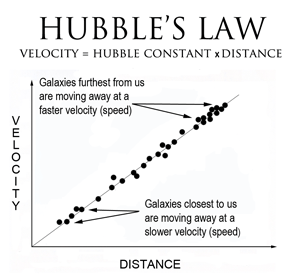JohnEmmett
Well-Known Member
- Jan 21, 2017
- 5,139
- 454
- Country
- United States
- Faith
- Buddhist
- Marital Status
- Celibate
Upvote
0
Not that it is particularly relevant, but I've noticed a form of heliocentrism still evident in the reasoning of cosmologists, as they seem to measure everything by degree of redshift relative to ourselves. That may not be a fair statement if left without mention of the other things they DO take into account, but it still strikes me, all the same.
Observations of sunspots as they move across the Sun's disc completely destroy the idea that the Sun is flat.Amongst other pieces of nonsense in this video is the claim the Sun and Moon are also flat which raises a question regarding the Moon.
Libration completely destroys this idea.
Einstein recently (the last century) said it well could be. The top ten or twelve math-maticians on earth agreed.

Their names were given or not given in the reports about Einstein correctly and accurately quoted in news items years ago.Care to name these top ten or twelve mathematicians???
????Their names were given or not given in the reports about Einstein correctly and accurately quoted in news items years ago.
Yeah, I understood distances, but, for eg, it doesn't make sense to me how, if, let's say, "east" of us a galaxy is receding (relative to us) at, let's say, 1/4 the speed of light, and "west" of us, another is receding relative to us at 1/4 the speed of light, how an observer in the one galaxy would see the other galaxy with the same degree of redshift that we do. But maybe that isn't what you were saying. I do see how very distant galaxies might seem about the same for any Milky Way observer, or maybe even any observer in our local galaxy cluster.
The two galaxies, supposing each to be receding relative to us, at 3/4 the speed of light, should be, according to intuition, be receding relative to each other, at more than the speed of light. But people keep telling me it is impossible to exceed the speed of light. I keep wanting to ask them, "The speed of light relative to WHAT?" THAT, I still do not understand.
I must not have been clear.If the two galaxies were each receding from the Milky Way at 3/4 of the speed of light, from either of these two galaxies the other would be receding at more than 3/4 of the speed of light. You would need to understand relativistic cosmology to be able to calculate the apparent recession speed of one galaxy relative to the other.
They're not moving*. It's the space inbetween them which is expanding. To use the old balloon analogy, if you put two marks on a balloon and then blow it up, the two marks (galaxies) are in exactly the same spot on the balloon (space). But the distance between them is getting greater.I must not have been clear.
I'm asking, now, if one galaxy is receding from us at 3/4 the speed of light relative to us, while another is receding from us in the opposite direction at 3/4 the speed of light relative to us, how are they not achieving 1.5 times the speed of light relative to each other?
Of course. But my description is that they are moving apart at that speed relative to us, and being in opposite directions, at double that speed relative to each other. The question is not whether they are moving our direction relative to some other object.They're not moving*. It's the space inbetween them which is expanding. To use the old balloon analogy, if you put two marks on a balloon and then blow it up, the two marks (galaxies) are in exactly the same spot on the balloon (space). But the distance between them is getting greater.
*They'll definitely be moving but assume for the purpose of the exercise that they are not. They actually may be moving towards each other but still getting further apart.
That makes sense. So, if the expansion between objects can be greater than the speed of light, why do they say that nothing can exceed the speed of light? Is not the question, "relative to what?", incoherent here?And if you have three dots on the balloon then the two furthest apart will be moving away from reach other faster than the two losest together. So distant galaxies are receding faster than closer ones. And you get to a point when the expansion, as you pointed out, is greater than the speed of light. So they literally dissapear. Nothing happening there will ever be available to us. That distance is the radius of the observable universe - about 46 billion light years. Observable because anything outside it is unobservable.
Again, they are not moving through space. They could well be static. But the space is expanding. And the further apart two objects are, the faster is the distance between them expanding. So you could look in one direction and it would appear that galaxy A is moving away from us at 0.75 the speed of light. Look in the other direction and you'd see another galaxy B doing exactly the same. But...if you were standing somewhere in galaxy A then the space between you and B is expanding faster than the speed of light can cross it. So light from B would never reach you.Of course. But my description is that they are moving apart at that speed relative to us, and being in opposite directions, at double that speed relative to each other. The question is not whether they are moving our direction relative to some other object.
Speed equals distance/time. So something has to move X distance through space relative to any given point over time T to get a speed of X/T, relative to the given point. Both galaxies could be static. They aren't moving (they will be moving in some direction but assume they are not). Just like the dots on the balloon. So their speed relative to any other static object is zero. But...the distance between them is getting bigger.That makes sense. So, if the expansion between objects can be greater than the speed of light, why do they say that nothing can exceed the speed of light? Is not the question, "relative to what?", incoherent here?
Not meaning to disparage, nor even saying I'm right, but that sounds like simple double-talk to me. And what is a static object? I mean, how can you say that any object in space is actually static? It's only a comparative statement, no?Again, they are not moving through space. They could well be static. But the space is expanding. And the further apart two objects are, the faster is the distance between them expanding. So you could look in one direction and it would appear that galaxy A is moving away from us at 0.75 the speed of light. Look in the other direction and you'd see another galaxy B doing exactly the same. But...if you were standing somewhere in galaxy A then the space between you and B is expanding faster than the speed of light can cross it. So light from B would never reach you.
Speed equals distance/time. So something has to move X distance through space relative to any given point over time T to get a speed of X/T, relative to the given point. Both galaxies could be static. They aren't moving (they will be moving in some direction but assume they are not). Just like the dots on the balloon. So their speed relative to any other static object is zero. But...the distance between them is getting bigger.
I know this is difficult to grasp, but galaxies aren't necessarily moving away from each other, but the distance between them is increasing.Not meaning to disparage, nor even saying I'm right, but that sounds like simple double-talk to me. And what is a static object? I mean, how can you say that any object in space is actually static? It's only a comparative statement, no?
One (to me) seeming-implication though, raised by your description, is that if space is expanding the objects in space should also be expanding, the very smallest particle expanding also, which expansion would be undetectable. But either way, it still sounds like the objects on the 'surface' of the expansion are nevertheless moving away from each other, at some speed relative to each other, and therefore (as we suppose) A may move relative to B at more than the speed of light and thus be invisible to B.
Begs the question, if we are expanding, how would we know!I know this is difficult to grasp, but galaxies aren't necessarily moving away from each other, but the distance between them is increasing.
This is a good article that describes it: This Is Why We Aren't Expanding, Even If The Universe Is
And it explains that other forces come into play at smaller distances. Such as gravity. So local expansion doesn't happen.
Ok, I read it, and I can understand what it says about the local distances not expanding, but I still don't get it. The fact that the expansion seems to be itself accelerating can only (so far as I understood) observed, but not explained. In a 3-d grid universe, this could still happen, it seems to me. The fact we can't explain it doesn't mean we have to get fancy. In fact, some of the conjectures I see could also apply in 3-d space. But, I agree that I just don't get it. I'll read it again, and try to follow the differences, but so far, it sounds like double-talk.I know this is difficult to grasp, but galaxies aren't necessarily moving away from each other, but the distance between them is increasing.
This is a good article that describes it: This Is Why We Aren't Expanding, Even If The Universe Is
And it explains that other forces come into play at smaller distances. Such as gravity. So local expansion doesn't happen.
Before the Theory of Relativity we had already begun to discover physical anomalies that are explained by it and not by regular Newtonian physics, like the orbit of Mercury. In the modern world the readings and time data of accurate global positioning satellites also feature anomalies consistent with relativistic effects.Ok, I read it, and I can understand what it says about the local distances not expanding, but I still don't get it. The fact that the expansion seems to be itself accelerating can only (so far as I understood) observed, but not explained. In a 3-d grid universe, this could still happen, it seems to me. The fact we can't explain it doesn't mean we have to get fancy. In fact, some of the conjectures I see could also apply in 3-d space. But, I agree that I just don't get it. I'll read it again, and try to follow the differences, but so far, it sounds like double-talk.
The two pieces of evidence which support metric expansion of distant non gravitationally bound galaxies instead of galaxies moving in space are;Ok, I read it, and I can understand what it says about the local distances not expanding, but I still don't get it. The fact that the expansion seems to be itself accelerating can only (so far as I understood) observed, but not explained. In a 3-d grid universe, this could still happen, it seems to me. The fact we can't explain it doesn't mean we have to get fancy. In fact, some of the conjectures I see could also apply in 3-d space. But, I agree that I just don't get it. I'll read it again, and try to follow the differences, but so far, it sounds like double-talk.

